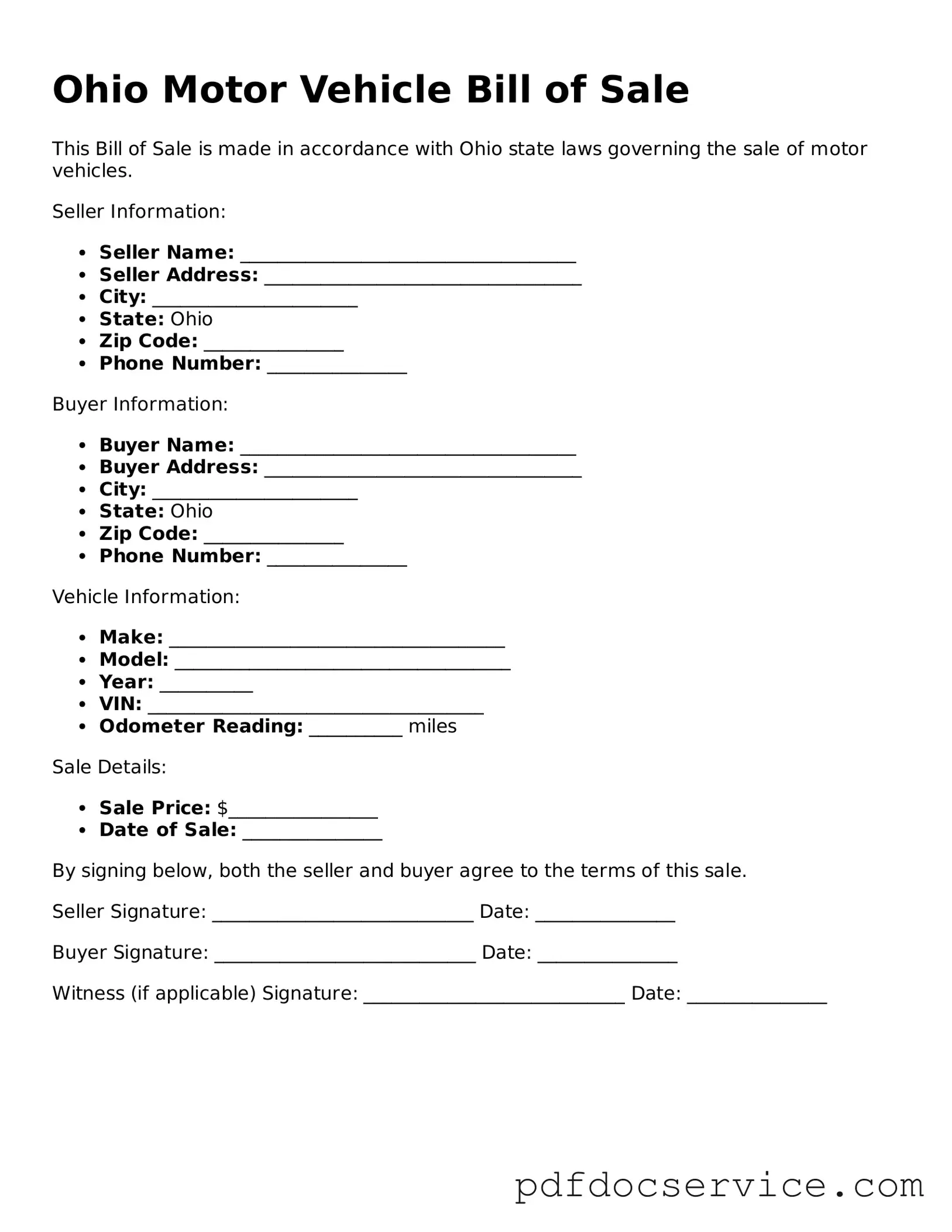Printable Motor Vehicle Bill of Sale Template for Ohio
The Ohio Motor Vehicle Bill of Sale form is a legal document that records the sale of a vehicle from one party to another. This form serves as proof of the transaction, detailing essential information about the vehicle and the parties involved. Understanding this form is crucial for both buyers and sellers to ensure a smooth transfer of ownership.
Open Motor Vehicle Bill of Sale Editor
